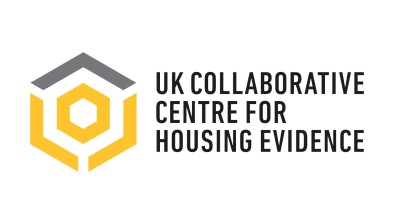From homelessness to hope: Progress for LGBTQ+ housing rights in the UK?

In the UK, LGBTQ+ people continue to face significant challenges when it comes to finding safe and secure housing. Despite progress in policy and legislation, discrimination and inequality persist. In this blog, CaCHE’s Knowledge Exchange and Impact Fellow, Gareth Young, gives an overview of the current state of LGBTQ+ housing in the UK, and what needs to be done to ensure that everyone has access to the housing they need.
As part of our newly launched podcast, Equality in Housing, we spoke to Janice Stephenson from LGBT Youth Scotland. Her work supporting young LGBTQ+ people experiencing housing and homelessness in Scotland was both inspiring and sobering. It reminded us that while we’ve made progress in LGBTQ+ rights and reducing discrimination, there’s still a long way to go in ensuring equal access to safe and secure housing for all.
With February being LGBT+ History Month, now felt like the right time to reflect on what progress has been made in UK housing policy and practice in relation to LGBTQ+ people.
LGBTQ+ rights and discrimination
There’s lots to be celebrated. Across the housing sector in the UK, there are many examples of good work being done to support LGBTQ+ people with their housing, whether this is younger people facing homelessness or helping improve the housing and health care options for older people.
It has now been well over fifty years since homosexuality was decriminalised, and there has been significant progress made over the last few decades to help redress the inequalities LGBTQ+ people face. We have one of the most progressive statutory frameworks for promoting equality, with the Equality Act 2010 drawing together the equal treatment of people in respect of access to employment, as well as private and public services, regardless of age, disability, gender reassignment, marriage and civil partnership, race, religion or belief, sex and sexual orientation. This was closely followed by legal changes allowing same-sex marriage. But, as Matthews and Poyner said, ‘policy is a much broader tool than just legislation’. It is great that the legislation exists, but the implementation and service delivery also needs to ensure that opportunities are equal and that discrimination is addressed.
However, we know that LGBTQ+ people still face discrimination disproportionately and might not be aware of the support available. According to recent research by the charity akt, over half (59%) of young people surveyed faced some kind of discrimination or harassment when seeking support. They also found that less than half (44%) of the people surveyed knew of any housing support available to them.
What does the data say?
Recent conversations with academics and professionals across the housing sector has highlighted the same thing: we don’t know enough about the people we are trying to support. The data organisations collect around people’s identity remains patchy, which means there remain questions about who organisations are working with and how they can best support them, which can’t always be answered. We are seeing progress; for example, the national census is now asking questions about people’s LGBTQ+ identity, but within the housing and homelessness sector there still feels like a long way to go, which means we don’t really know the full extent to which discrimination in the housing sector exists.
However, we do have enough evidence to know that there are heightened risks to LGBTQ+ people facing discrimination and harassment. A 2022 study found that around 1 in 5 LGBTQ+ private renters have experienced discrimination from landlords, with transgender individuals experiencing even higher levels of discrimination and risk of homelessness. This discrimination within a housing context can take many forms, from landlords and estate agents refusing to rent to LGBTQ+ people, to harassment and abuse from neighbours.
Recent peer research undertaken by LGBT Youth Scotland, and drawing on research from akt, highlighted that LGBTQ+ people are disproportionately represented in the young homeless population and 77% of LGBTQ+ people spoken with felt that their identity is a contributing factor to their homelessness.
So, what’s the answer?
Of course, addressing any housing challenge is never easy, and there’s rarely a single silver bullet solution. But it’s not all bleak. Recognising the gaps in our knowledge and having these conversations widely across the sector means that, in time, there will be better-disaggregated data available to help ensure that LGBTQ+ people, or any minoritized population, needs and experiences are better understood.
Continued research, especially high-quality peer research, which is helping to shine a light on people’s experiences of accessing housing and services, including their experiences of discrimination in the process, provides a baseline from which the sector can begin to respond.
Those who are working on the frontline with LGBTQ+ people also need to have appropriate training and support so they can feel confident that they’re well equipped to effectively help people who need to access services and accommodation. The LGBT Youth Scotland Commission consulted professionals and their findings showed that there were inconsistent levels of LGBT awareness training, with most stating they had had no training at all. This has a direct impact on professionals’ confidence to support people coming to them for help. And again, there was evidence to show that services are not consistently recording sexual orientation and trans identity.
Reflecting on LGBTQ+ history shows that significant progress has been made, but much of this is very recent history. Progress is being made, but there’s still a significant way to go, which will take time. But continuing to work with LGBTQ+ people to understand more about their experiences, as well as continuing to build partnerships across academia, policy, and practice to develop a coalition of allies, can only be a positive step in the right direction.









